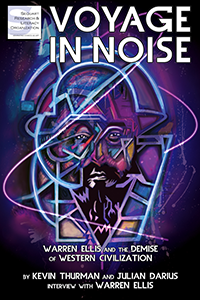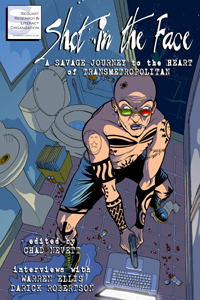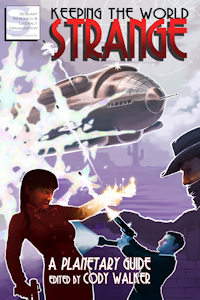, a new series that chronicled a small and secret team’s investigations of a super-hero universe. The second was The Authority.
The Authority, though a new series, was actually a revamping of Stormwatch. It featured the same writer and artists as Stormwatch, as well as a number of the same characters. But it felt incredibly new. Ellis, Hitch, and Neary had invented “widescreen” super-heroics — as it quickly came to be called. The art was impecably smooth and tight, colored expertly. The transitions between scenes were rapid, and the transitions between panels were smooth, focusing on the three-dimensionality of each shot rather than the flat, literary quality of the page. The overall effect was not only cinematic but felt like a big-budget blockbuster. Super-powered villains flew through major cities en masse, devastating them. This was a super-hero world turned loose, with no restrictions keeping villains from simply doing massive damage. The effect was like the destruction of London in Alan Moore‘s Miracleman, only in a world where super-heroes abounded — creating a “yes, this would happen” effect on the scale of an entire line of super-hero titles rather than just one. This would be the great strength and a continuing problem for the series, as the damage inflicted on the world added up and went unreflected in other Wildstorm titles.
Each story was set at four issues. The stakes were high: whole cities, millions of lives, and heroes whose powers together seemed the greatest ever assembled. Pressure built; a reader knew the actual number of pages left to each story and wondered how it could possibly be resolved. The Authority #4 concluded the conflict by having Midnighter use the team’s ship as a blunt instrument, literally running it through the villain, his entire island, and all of his seemingly unstoppable technology. It was brilliant.
The next two stories only escalated the stakes. The second storyline featured the Authority very questionably annihilating an entire global regime on an alternate Earth; the Doctor held Italy in place while the planet rotated, burying the world capital underwater. Admittedly, the regime was detestable, unsophisticated, and warmongering — but a careful reader got the sense that the rather obnoxious and self-righteous (albeit amusing) Jenny Sparks (appropriately the spirit of the 20th century), was willing to kill everyone in Italy because the ruling regime had used rape on a wide scale — a motivation hinted at her comments as she visits her former husband, taking only female members with her; she tells him she only loved from the waist down (which isn’t only objectifying but rather hard to believe, suggesting more than a little resentment on Jenny’s part).
The final storyline had the team fight “God” and had Jenny Sparks die (predictably but appropriately) on 31 December 2000. The final image was of a newly born child, presumably that of the spirit of the 21st century — an image of redemption and continued life, as well as a metaphor for the series continuing.
The entire creative team left with issue #12, unable to trump what he had already done. They knew to leave on a good note. From the opening of a new issue to the final page, had been little breathing room. I would sit and smoke two cigarettes as I read nervously, my eyes and mind at worst tightly attentive and at best absolutely reeling. A second reading would quickly follow. The month between issues felt impossibly long. The dialogue was snappy and sparse, the art crisp and beautiful, often depicting scenes of grand scope with (at least) the mastery of the best Hollywood special effects company.




























